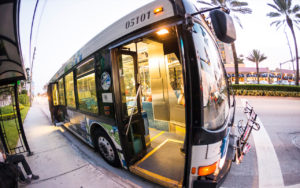 We recently wrote about the legislation that the Miami-Dade County Commission passed, giving the County exclusive regulatory jurisdiction over the property within the SMART Plan corridors. Now, the Miami-Dade Transportation Planning Organization (TPO) has made a major decision largely affecting the future of the SMART Plan.
We recently wrote about the legislation that the Miami-Dade County Commission passed, giving the County exclusive regulatory jurisdiction over the property within the SMART Plan corridors. Now, the Miami-Dade Transportation Planning Organization (TPO) has made a major decision largely affecting the future of the SMART Plan.
Yesterday, the TPO decided to adopt the County consultant’s recommendation to use Bus Rapid Transit (BRT) as the mode of transportation for the implementation of the southern corridor of the SMART Plan. The consultant’s recommendation was based on a multi-year study that compared potential modes, including BRT and the extension of the MetroRail at ground level. BRT was supported by the Mayor, County Public Works Department, and three of the five municipalities along the southern corridor, which extends from Dadeland all the way south to Homestead and Florida City. The County chose BRT, with a promise to look at a conversion to rail upon reaching 35,000 average weekday riders.
The type of transportation to be used for the SMART Plan has been a major controversy, especially with regard to implementation in the southern corridor. The southern corridor has never been served by the County’s Metrorail system, and US-1 is the only thoroughfare that connects people in the southernmost parts of the County to Downtown Miami and I-95. With huge population growth in this area of the County, the limited connectivity has been a recipe for severe traffic congestion. Although many promoted BRT as the most cost-effective and expeditious solution to this problem, others advocated for a rail extension as a more significant change, in part because the southern corridor is already serviced by County buses and other areas of the County have Metrorail service.
This decision provides more certainty for the future of the SMART Plan, and is another big step in the revitalization of Miami-Dade County public transportation. A benefit to BRT is that it is much more cost-effective than rail. This decision will allow for more funds to be allocated to other SMART Plan corridors, potentially through public-private partnerships.
